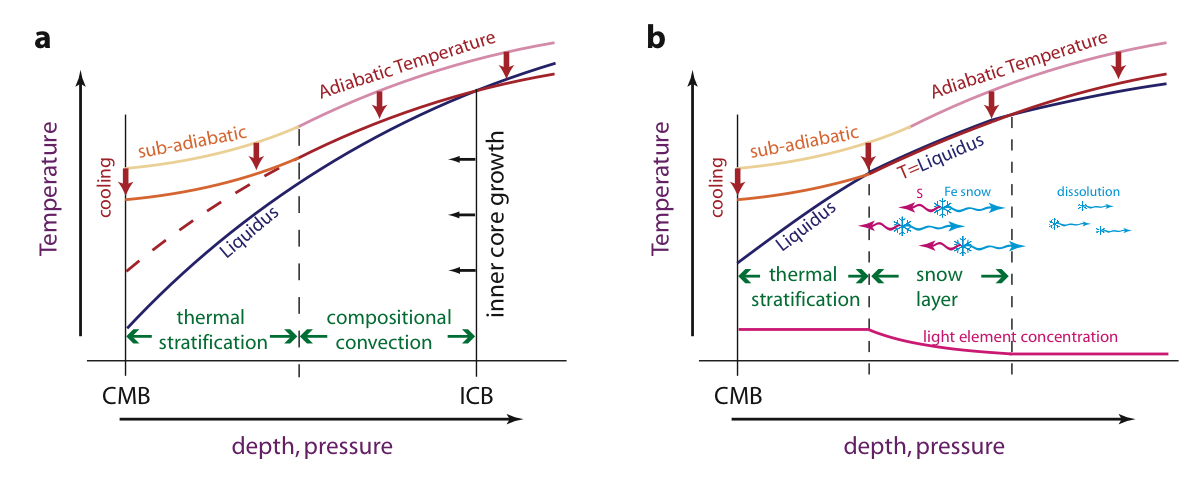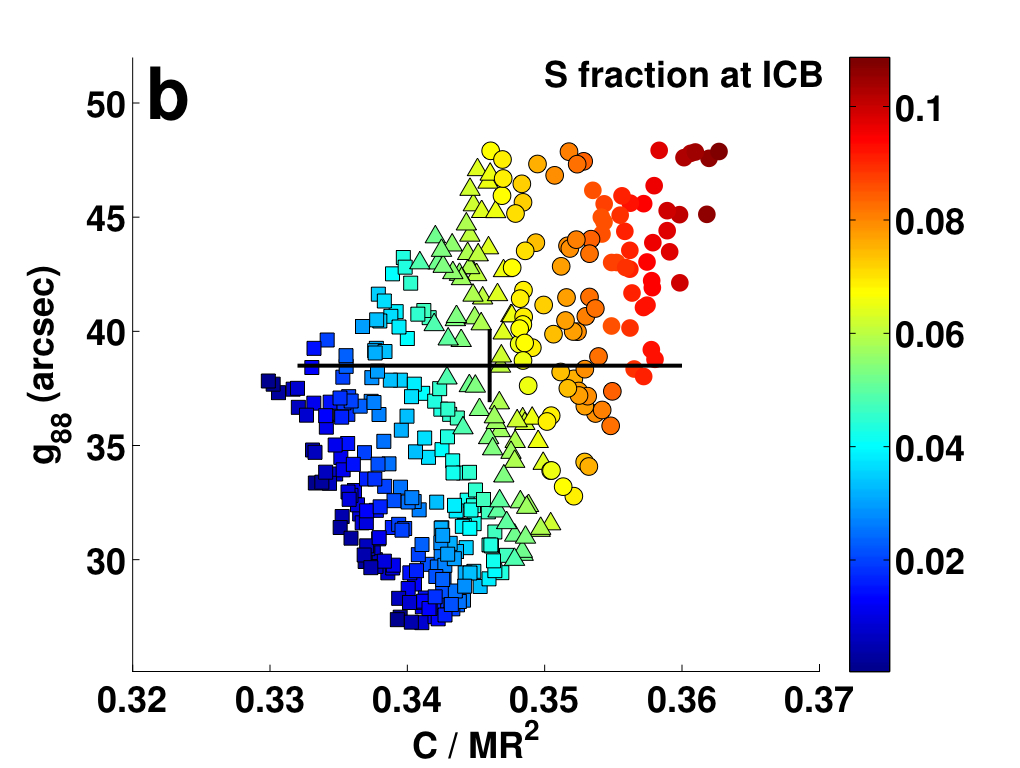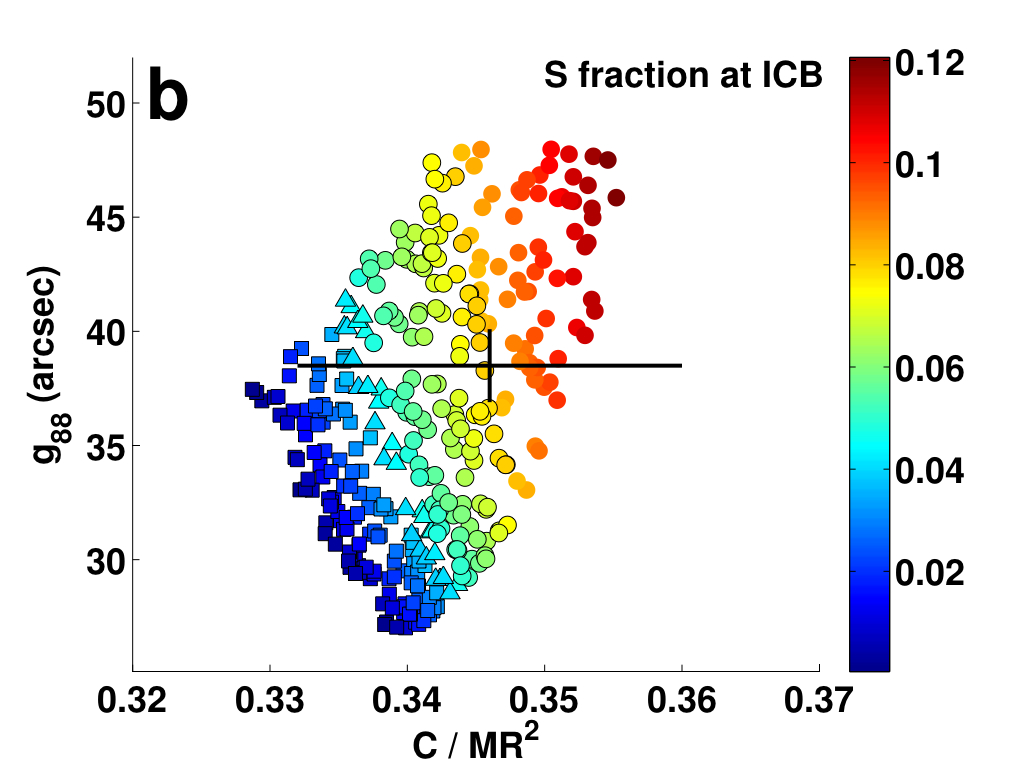Iron-snow in Mercury's core
Convection within Earth's fluid core is likely powered (in part) by
crystallization of iron-rich material at the inner core boundary,
leading to buoyant upwellings of iron-depleted fluid and thermal
buoyancy from the release of latent heat. However, depending on a
planet's size and core composition, crystallization may occur instead
in the volume of its fluid core, in the form of iron-rich snow. This
is the case if the gradient of the melting temperature of the metallic
alloy of the core with depth is less steep than the adiabatic temperature
gradient (Figure 1).
With my colleague A. Rivoldini, we have recently investigated which of
these crystallization regimes most likely applies in Mercury's core
at present day. This involved building interior models of Mercury
to track the variation in density, pressure and temperature as a
function of depth, as well as the melting temperature of the iron
alloy in its liquid core. We then constrained these models to match
the geodetic observations on the moments of inertia of Mercury.
We concluded that Mercury's magnetic field is most likely powered by
buoyancy in an iron-snow regime (Figure 2).
However, many dynamical questions associated with this regime remain
to be investigated. Iron-snow formation should be accompanied by the
development of a stably stratified compositional gradient. Convection
can still occur in the form of double-diffusive convection (or
semi-convection), though whether a magnetic field can be sustained in
such a regime (and what morphology it would take) are questions that we are currently investigating.

Figure 1: Schematics for 2 different crystallization regimes. (a) Earth-like regime. Cooling leads to first crossing of the liquidus at the center. An inner core grows as cooling proceeds. (b) Snow regime. Cooling leads to first crossing of the liquidus near the bottom of the thermally stratified region. Fe-rich snow forms, sinks under gravity; buoyant light elements (S) float upward. Cooling leads to an extension of the snow formation to greater depth, accompanied by the formation of a stable compositional gradient. From Dumberry and Rivoldini, Icarus, 2015. |
 
Figure 2: Plots of sulfur weight fraction in the fluid at the ICB as a function of the mean moment of inertia (C=MR2) and the amplitude of librations (g88) calculated for a suite of interior models with an inner core radius of 500 km (left) and 1000 km (right). Symbols identify the crystallization regimes: squares = no snow; triangles = snow layer; circles = deep snow. No-edge symbols identify cases where snow formation extends to the CMB. Black crosses indicate observational constraints on C=MR2 and g88. From Dumberry and Rivoldini, Icarus, 2015. |
Paper on this topic
Steinbrügge, G., Dumberry, M., Rivoldini, A., Schubert, G. Cao, H., Schroeder, D. M. and Soderlund, K. M., 2021, Challenges on Mercury's interior structure posed by the new measurements of its obliquity and tides, Geophysical Research Letters, 48, e2020GL089895.
Dumberry, M. and Rivoldini, A., 2015, Mercury's inner core size and core-crystallization regime, Icarus, 248, 254-268.

